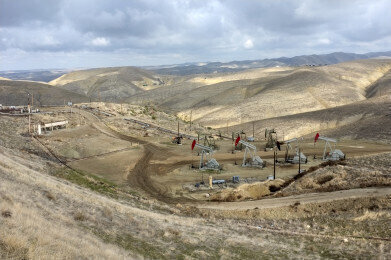Fuel for Thought
The Coronavirus oil crisis - what it might mean for the oil & gas sector
Apr 30 2020
Coronavirus crude price collapse – business implications for the oil and gas sector
Negative pricing for the May WTI futures contract sent a shockwave through the oil and gas sector. Crude oil pricing structures have evolved over decades but were never designed for the demand shock resulting from the Coronavirus.
For importers of crude oil, the current situation might appear to be a buying opportunity to fill strategic reserves. However, picking the low in the market is not easy and over-committing to deliveries for which there is no storage capacity is risky.
What lies behind the Coronavirus oil crisis?
Perhaps the market pricing structure was simply not set up for this black-swan event. Did geopolitical tensions also play a role in the recent oil price collapse? Could producers have cut production deeper and faster? Incredulity, and our instinctive desire to understand will lead us to ask the question: ‘why did the oil price crash so dramatically’?
The simple answer is that supply and demand rapidly fell out of balance. There was an abrupt reduction in aviation, maritime, rail and road travel which caused a waterfall decline in refined products consumption. Petrochemical plants cut processing volumes in response to falling demand for their products in industries such as the automotive sector and textiles production. Electricity generation slumped in line with the drop in industrial activity and fuel oil demand dropped accordingly. But, all around the world, we kept on producing crude oil... millions of barrels per day more than we could consume.
When will land-locked producers be shuttering?
In any supply chain, storage between two processing steps is the buffer that absorbs short term swings in demand. Static storage in the crude supply chain is fixed. However, redundant oil tankers can be used as temporary additional storage capacity for offshore or nearshore producers. This may be a short-term salvation for oil producers in the UK and Norwegian North Sea sectors, Australian production in the Indian ocean and some Middle Easter wells.
The tanker storage option does not exist for many land-locked producers in the USA and, at the time of writing, the US rig count has fallen a dramatic 40% from 650 to 380. Shuttering wells is expensive, but for many inshore producers that may be inevitable. On the other hand, some might prefer to ‘wait and see’. Production cuts in other geo-regions may redress the global supply and demand balance and trigger an upward move in pricing to save the day. But waiting for this to happen is a high-risk strategy based largely on hope.
More storage capacity construction ahead?
In 2018 there were extremely low water levels on the Rhine in Germany. The situation meant that barges moving refined products and chemicals up and down the river were either left stranded or could only carry partial loads. Inland transportation of liquid fuels on the roads and rail was left to shoulder the burden and distribution prices skyrocketed. Several chemicals producers declared force-majeure because they could either not receive feedstock for processing or could not deliver product to customers.
The situation on the Rhine led to a greater awareness of the value of strategic stocks and a surge in the interest for additional storage terminals. Capacity investment followed, sometimes with the goal to convert low-margin strategic storage higher margin chemicals storage to exploit the business opportunity. Despite it being a freak event, the lessons from the dry summer of 2018 and the low water levels on the river were learned quickly. Bloomberg ran a headline on 27th of April claiming “South Korea Out of Onshore Oil Storage for Third-Party lease”. Will the current situation also trigger storage terminal investments in other regions?
Short- and long-term setbacks for new projects
On the 25th of April, Petronas declared that production had not been shut down and that 18 offshore rigs in Malaysian waters were operational. Despite this, it is expected that one third of the exploration well projects in the Asia Pacific region will be put on hold. In comparison to the Middle East and Russia, production costs in Asia are high and less than 20% of the current slate of Asia Pacific exploration and production projects would break even at less than US$35 per barrel. And, if global energy demand moves away from crude oil in a quest for decarbonisation or to diversify away from this volatile commodity, we can expect prolonged oversupply which will threaten investments in the long term.
Petronas also confirmed that some projects were being delayed due to the Movement Control Order imposed by the Malaysian government to curb the spread of the Coronavirus. Delays also result from supply chain disruption as equipment deliveries from other global locations are deferred due to lockdowns around the globe. These issues are not confined to Asia. On the 26th of April, Sipchem announced a 6-month extension in their negotiations with Linde to develop hydrogen and syngas supplies to their operations in Jubail, KSA. The reason given was that travel restrictions were leading to delays in the site visits required for the due diligence process. Travel restrictions may be a short-term concern, but the Coronavirus oil crisis will also have lasting knock-on implications for future energy sector investments.
Will the Coronavirus oil crisis herald a modified energy mix?
As a stark reminder that energy importin nations have a mix of options, in early April this year, Sinopec announced the construction of 5 additional LNG storage tanks and a new tanker berth at their Tianjin terminal. Worldwide, natural gas and renewables have overtaken coal as the top modes of electricity production in OECD countries. The crash in crude oil pricing might seem like a great buying opportunity, but it will also send nervous shudders around the globe, reinforcing the commodity’s reputation for volatile pricing.
When reflecting on the lessons of the Coronavirus oil crisis, long term planners may prefer the stability of local production in favour of international supply chains. Diversity will be highly valued in national energy policies. Investment in green hydrogen infrastructure for industry, heating and mobility may also be pulled forward to decarbonise the energy sector and move away from fossil fuels altogether. Covid-19 countermeasures threw a boulder into the water. The initial tidal wave is obvious to see but the second- and third-degree ripples will come ashore in many unpredictable locations, sometimes with surprising effects.
What about the cost of borrowing and consolidation?
The price of oil may have fallen, but the cost of borrowing will rise. Unprofitable operations can be sustained for only a short period of time and bankruptcy filings are likely to accelerate. Tight oil in the US may feel the pinch soonest because it is one of the most expensive crude sources in production globally. However, at current crude oil prices, many other upstream operations are also pumping oil at a higher marginal cost than the product value.
As lenders perceive oil sector investments to have a higher risk, project finance due diligence will need to closely scrutinise the sensitivities of investments. Credit ratings in the upstream sector would be revised downwards and corporate bond yields will rise to offset the risk premium. As some companies deplete their cash reserves and approach insolvency, they may become vulnerable for consolidation. However, the buyers will need to have belief in the long-term viability of their business model and will need cash or credit to acquire and rebuild the company. The need for rigorous environmental, technical and commercial due diligence during the M&A process will be high, even if there is pressure to move quickly.
Conclusion
The Coronavirus oil crisis has created a tidal wave in the oil and gas sector and the subsequent ripples will be felt across upstream, midstream, downstream and storage operations. There will be a need to remodel feasibility studies under new sensitivity scenarios. Project finance will rely on rigorous independent support to arrive at appropriate risk ratings. Potential M&A transactions will call for careful reviewed to sieve genuine opportunities from value-traps. Governmental energy policies and infrastructure investments may diversify towards renewables and hydrogen. Despite the downturn in oil consumption, there will still be plenty to do!
Stephen B. Harrison Principal, Germany at Nexant Energy & Chemicals Advisory.
Digital Edition
PIN 25.1 Feb/March
March 2024
In This Edition Safety - The technology behind the ION Science Tiger XT - Safety with ammonia and LOHCs as hydrogen carriers Analytical Instrumentation - Discussion on new tribology te...
View all digital editions
Events
Apr 22 2024 Hannover, Germany
Apr 22 2024 Marrakech, Morroco
Apr 22 2024 Muscat, Oman
Apr 22 2024 Rotterdam, Netherlands
Apr 23 2024 Singapore



















